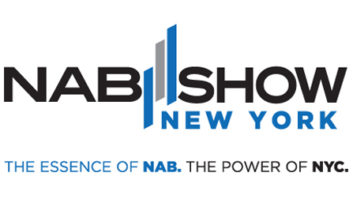
The author is technical editor of Radio World Engineering Extra.
Those who read my writing regularly will probably know that I am somewhat skeptical of the mobile phone revolution that has been happening around us for the last few years. For me, the mobile phone has been a welcome productivity appliance, but no more than that.
In the beginning, it was a way to stay in touch with staff while on the road. Later, mobile phones incorporated the functions of the Personal Digital Assistant, allowing us to carry a powerful business database in our pockets.
It certainly helped me to know that I had every phone number of relevance to my technical plant, including circuit IDs for broadcast lines, remote control numbers and even short instruction sheets on how to operate the various models of transmitters and their backup systems. Once this information was created, it could be copied to any number of phones so that accurate technical info could be widely distributed with ease. Finally, the widespread deployment of e-mail support to mobile was the ultimate in keeping in touch with the office.
But the trend in mobile began to cross over into the entertainment business as high-speed Internet surfing was offered. Apple Corp. in particular marketed its iPhones as an extension of the iPod: a portable entertainment device with tons of music storage and with really cool web-surfing. Oh, and it’s also a phone.
Virtually overnight, a forest of little programs sprang into bloom, featuring cute little games. The intention was to create a new draw on our attention with a time-consuming entertainment device.
It’s a shift in emphasis, but one that puts the mobile computer industry on a collision course with broadcasters and particularly radio. Especially music radio.
As we know, the “magic” behind all these mobile devices is fairly expensive. Some of that cost is borne by consumers in their monthly contract. But let’s face it: any business model that is based on capturing the attention of consumers is really based on making money through advertising. Mobile advertising has been the last unmatched strength of the radio business and it is now being challenged.
On the spot

A device like the Samsung Infuse 4G is a candidate as a serious newsgathering tool.
So it’s with some irony that my column for this month is about the use of the latest mobile devices to support radio newsgathering. That’s right, it turns out smartphones have a powerful business application for radio.
Scroll back just a few years, and the latest innovation was the netbook computer. Built with inexpensive and low-performance parts, netbooks were designed to be mobile computers that did 90 percent of the work of a laptop at a quarter the cost. Link up to the budding 3G mobile data networks or a WiFi hotspot and you could literally go just about anywhere and handle simple office work without a hard-wired connection.
The application to “on the spot” newsgathering was inescapable. For radio reporting, it was now possible to go to the scene of a news event, gather sound with a professional recorder and microphone, copy sound files to the netbook in a matter of seconds, edit them professionally using PC software and then upload the files with relative ease to the radio studio via FTP. All this could be done without special licenses, satellites or contracted services obtained weeks in advance. The audio quality could be as good as desired: full-fidelity when the speed was available and time wasn’t critical, or compressed files to compensate for the relatively slow upload speed of the telephone networks of that time.
Palm power
The latest generation of smartphones is already exceeding those early netbooks and, for some, adding the capabilities of a professional recorder and microphone.
The processor included in the latest Samsung Infuse 4G smartphone operates at 1.2 GHz and contains 16 GB of internal RAM. That compares favorably to a desktop computer running Windows XP. And it runs on a battery for several hours and fits in the palm of my hand.
Compare this with a typical Netbook from 2008, which sported a 1.6 GB processor and standard RAM of 512 MB. That wasn’t so long ago.
As you might expect, a handheld device with that much computing power is a candidate to replace the netbook as a newsgathering tool. Unlike the netbook computer, a handheld device is designed from the start to handle audio file storage due to its iPod heritage. It doesn’t need a complex operating system that requires an extended time to start and a nearby power supply. The smartphone can run specialty programs to edit, record and backhaul audio for news stories or spots. It already has a fairly good quality microphone built in. It replaces not only the netbook but can also replace the professional recorder.
Grown up

Pantech UML 290, as used with the Comrex Access 2 at NPR.
Last year at the NAB Show, iPhone applications were all over the place. Tieline uses the iPhone platform for an application known as Report-IT. The iPhone has the computing power to run what is essentially an audio streaming application that allows it to connect to a studio site decoder (such as the Bridge or Commander series) for live broadcasts at high fidelity. Comrex offers a similar product, the ARC, designed for use with smartphones based on the Android operating system.
But the current speed limitations of 3G data networks mean these are not all that reliable yet, outside of WiFi zones. In that case, reporters can use their smartphone as an audio recorder and send audio clips back to a station file server using the ftp protocol. The recording can be done simultaneously with a live feed and sent afterwards so that editors have available the higher-fidelity version of the feed if needed. Instead of having to carry a netbook, a recording device and a cell phone it is now possible to do the same work with only a smartphone.
Just recently NPR announced that it has been using 4G telephone networks for field reporting. In early April, Senator Kent Conrad of North Dakota was the first person to appear live via Verizon Wireless LTE and the Comrex Access 2USB. This was a 24-minute live segment that aired on national program Talk of the Nation. According to Charlie Mayer, NPR’s director of operations, they have been getting upload speeds between 2 and 5 Mbps using a USB connected modem stick — plenty of bandwidth for live, reliable and high quality audio. Advanced telephone networks are in their infancy but the prospect of combining high data speeds with a handheld device looks very promising.
For news stations these new technologies open up the ability to cover more places with greater quality. Smartphones have grown up and are now more than just a toy. For many, the iPhone or Android is the new recorder kit, and it offers greater flexibility than anything we’ve seen before. It promises to change the way we do news.









